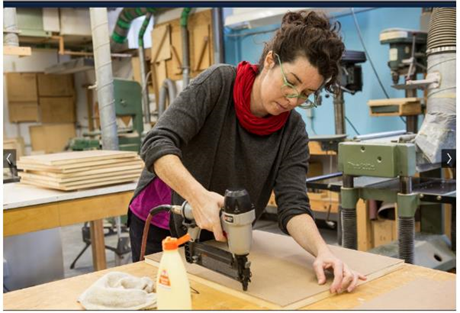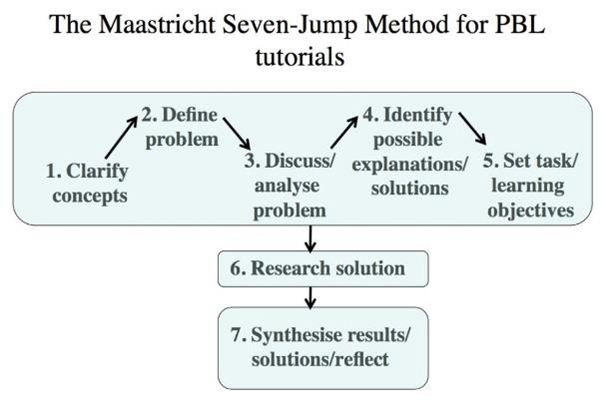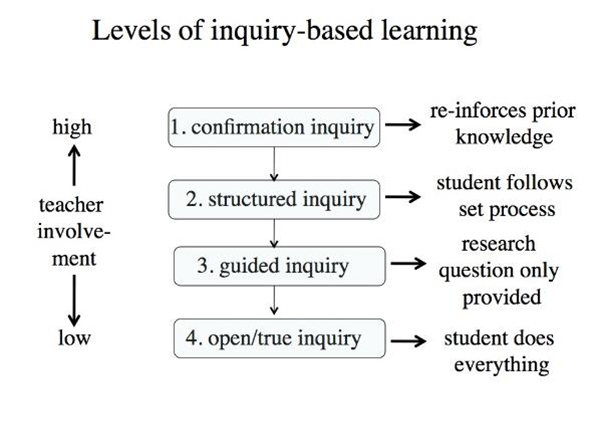Lesson 5 - Theories of Learning
18. Learning by Doing: Experiential Learning
18.3. Experiential Design Models
There are many different design models for experiential learning, but they also have many features in common.
Laboratory, Workshop, or Studio Work
Today, we take almost for granted that laboratory classes are an essential part of teaching science and engineering. Workshops and studios are considered critical for many forms of trades training or the development of creative arts. Labs, workshops, and studios serve a number of important functions or goals, which include:
- To give students hands-on experience in choosing and using common scientific, engineering or trades equipment appropriately.
- To develop motor skills in using scientific, engineering or industrial tools or creative media.
- To give students an understanding of the advantages and limitations of laboratory experiments.
- To enable students to see science, engineering or trade work ‘in action’.
- To enable students to test hypotheses or to see how well concepts, theories, procedures actually work when tested under laboratory conditions.
- To teach students how to design and/or conduct experiments.
- To enable students to design and create objects or equipment in different physical media.
An important pedagogical value of laboratory classes is that they enable students to move from the concrete (observing phenomena) to the abstract (understanding the principles or theories that are derived from the observation of phenomena). Another is that the laboratory introduces students to a critical cultural aspect of science and engineering, that all ideas need to be tested in a rigorous and particular manner for them to be considered ‘true’.
One major criticism of traditional educational labs or workshops is that they are limited in the kinds of equipment and experiences that scientists, engineers, and trades people need today. As scientific, engineering and trades equipment becomes more sophisticated and expensive, it becomes increasingly difficult to provide students in schools especially but increasingly now in colleges and universities direct access to such equipment. Furthermore traditional teaching labs or workshops are capital and labour intensive and hence do not scale easily, a critical disadvantage in rapidly expanding educational opportunities.
Because laboratory work is such an accepted part of science teaching, it is worth remembering that teaching science through laboratory work is in historical terms a fairly recent development. In the 1860s neither Oxford nor Cambridge University was willing to teach empirical science. Thomas Huxley, therefore, developed a program at the Royal School of Mines (a constituent college of what is now Imperial College, of the University of London) to teach school-teachers how to teach science, including how to design laboratories for teaching experimental science to school children, a method that is still the most commonly used today, both in schools and universities.
At the same time, scientific and engineering progress since the nineteenth century has resulted in other forms of scientific testing and validation that take place outside at least the kind of ‘wet labs’ so common in schools and universities. Examples are nuclear accelerators, nanotechnology, quantum mechanics, and space exploration. Often the only way to observe or record phenomena in such contexts is remotely or digitally. It is also important to be clear about the objectives of the lab, workshop, and studio work. There may now be other, more practical, more economic, or more powerful ways of achieving these objectives through the use of new technology, such as remote labs, simulations, and experiential learning. These will be examined in more detail later in this book.
Problem - Based LearningThe earliest form of systematized problem-based learning (PBL) was developed in 1969 by Howard Barrows and colleagues in the School of Medicine at McMaster University in Canada, from where it has spread to many other universities, colleges, and schools. This approach is increasingly used in subject domains where the knowledge base is rapidly expanding and where it is impossible for students to master all the knowledge in the domain within a limited period of study. Working in groups, students identify what they already know, what they need to know, and how and where to access new information that may lead to resolution of the problem. The role of the instructor (usually called a tutor in classic PBL) is critical in facilitating and guiding the learning process.
Usually, PBL follows a strongly systematized approach to solving problems, although the detailed steps and sequence tend to vary to some extent, depending on the subject domain. The following is a typical example:

Traditionally, the first five steps would be done in a small face-to-face class tutorial of 20-25 students, with the sixth step requiring either individual or small group (four or five students) private study, with a seventh step being accomplished in a full group meeting with the tutor. However, this approach also lends itself to blended learning in particular, where the research solution (step 6) is done mainly online, although some instructors have managed the whole process online, using a combination of synchronous web conferencing and asynchronous online discussion.
Developing a complete the problem-based learning curriculum is challenging, as problems must be carefully chosen, increasing in complexity and difficulty over the course of study, and problems must be chosen so as to cover all the required components of the curriculum. Students often find the problem-based learning approach challenging, particularly in the early stages, where their foundational knowledge base may not be sufficient to solve some of the problems. (The term ‘cognitive overload’ has been used to describe this situation.) Others argue that lectures provide a quicker and more condensed way to cover the same topics. The assessment also has to be carefully designed, especially if a final exam carries heavyweight in grading, to ensure that problem-solving skills as well as content coverage are measured.
However, research (see, for instance, Strobel and van Barneveld, 2009) has found that problem-based learning is better for long-term retention of material and developing ‘replicable’ skills, as well as for improving students’ attitudes towards learning. There are now many variations on the ‘pure’ PBL approach, with problems being set after initial content has been covered in more traditional ways, such as lectures or prior reading, for instance.
The methodology of problem-based learning however is one essential tool for developing the knowledge and skills needed in a digital society.
Case-Based LearningWith case-based teaching, students develop skills in analytical thinking and reflective judgment by reading and discussing complex, real-life scenarios.
University of Michigan Centre for Research on Teaching and Learning
Case-based learning is sometimes considered a variation of PBL, while others see it as a design model in its own right. As with PBL, case-based learning uses a guided inquiry method but usually requires the students to have a degree of prior knowledge that can assist in analyzing the case. There is usually more flexibility in the approach to case-based learning compared to PBL. Case-based learning is particularly popular in business education, law schools, and clinical practice in medicine, but can be used in many other subject domains.
Herreid (2004) provides eleven basic rules for case-based learning.
Tells a story
Focuses on an interest-arousing issue
Set in the past five years
Creates empathy with the central characters
Includes direct quotations from the characters
Relevant to the reader
Must have pedagogic utility
Conflict provoking
Decision forcing
Has generality
Is short
Using examples from clinical practice in medicine, Irby (1994) recommends five steps in case-based learning:
- Anchor teaching in a (carefully chosen) case
- Actively involve learners in discussing, analyzing and making recommendations regarding the case
- Model professional thinking and action as an instructor when discussing the case with learners
- Provide direction and feedback to learners in their discussions
- Create a collaborative learning environment where all views are respected
Case-based learning can be particularly valuable for dealing with complex, interdisciplinary topics or issues which have no obvious ‘right or wrong’ solutions, or where learners need to evaluate and decide on competing, alternative explanations. Case-based learning can also work well in both blended and fully online environments. Marcus, Taylor, and Ellis (2004) used the following design model for a case-based blended learning project in veterinary science:

Other configurations are of the course also possible, depending on the requirements of the subject.
Project-Based LearningProject-based learning is similar to case-based learning but tends to be longer and broader in scope, and with even more student autonomy/responsibility in the sense of choosing sub-topics, organizing their work, and deciding on what methods to use to conduct the project. Projects are usually based around real-world problems, which give students a sense of responsibility and ownership in their learning activities.
Once again, there are several best practices or guidelines for successful project work. For instance, Larmer and Mergendoller (2010) argue that every good project should meet two criteria:
- Students must perceive the work as personally meaningful, as a task that matters and that they want to do well.
- A meaningful project fulfills an educational purpose.
The main danger with project-based learning is that the project can take on a life of its own, with not only students but the instructor losing focus on the key, essential learning objectives, or important content areas that may not get covered. Thus project-based learning needs careful design and monitoring by the instructor.
Inquiry-Based LearningInquiry-based learning (IBL) is similar to project-based learning, but the role of the teacher/instructor is somewhat different. In project-based learning, the instructor decides the ‘driving question’ and plays a more active role in guiding the students through the process. In inquiry-based learning, the learner explores a theme and chooses a topic for research, develops a plan of research, and comes to conclusions, although an instructor is usually available to provide help and guidance when needed.
Banchi and Bell (2008) suggest that there are different levels of inquiry and students need to begin at the first level and work through the other levels to get to ‘true’ or ‘open’ inquiry as follows:

It can be seen that the fourth level of inquiry describes the graduate thesis process, although proponents of inquiry-based learning has advocated its value at all levels of education.